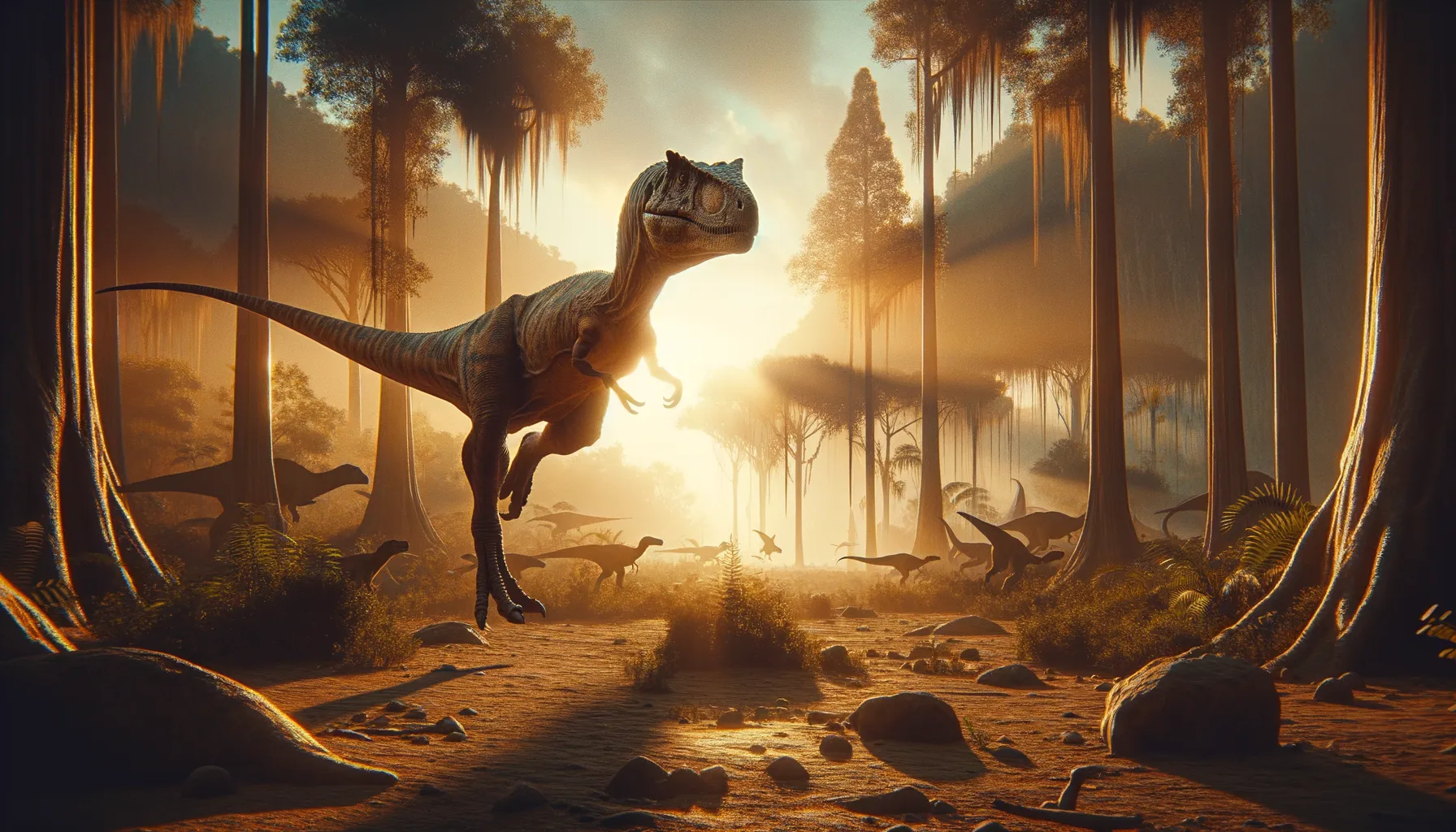
Xinjiangovenator
Speedy predator of the Cretaceous landscapes.
Period
Cretaceous
Length
Estimated to be about 3 meters long.
Height
Around 1.5 meters tall.
Weight
Approximately 25 to 50 kilograms.
The Xinjiangovenator was a small, agile predatory dinosaur that roamed the Earth during the Cretaceous period. Known for its speed, it was a bipedal theropod, a group that also includes the likes of Tyrannosaurus and Velociraptor. This dinosaur was discovered in China, and though not much is known about it, its fossils provide valuable insight into the rich and diverse ecosystem in which it lived.
Diet
Xinjiangovenator was likely a carnivore that fed on small vertebrates. Its diet may have included small mammals, lizards, and other smaller dinosaurs. Its agile nature would have made it an efficient hunter, catching prey with speed and precision.
Hunting
As a predator, Xinjiangovenator likely relied on its speed and agility to hunt. It may have used ambush tactics to surprise its prey and employed quick bursts of speed to close in on targets. Its hunting strategy was probably similar to that of modern predators like the cheetah, focusing on vulnerable or isolated animals.
Environmental challenges
Living during the early Cretaceous period, Xinjiangovenator had to adapt to a changing landscape with shifting climates and plant life. Competition for food would have been a constant challenge, given the presence of numerous other theropod species. Climatic fluctuations likely affected the availability of prey, requiring adaptability and keen survival skills. Environmental pressures may have also contributed to its evolutionary developments over time.
Speed
Relatively fast for its size, aiding in hunting.
Lifespan
Estimated to be around 10 to 20 years.
First discovery
First discovered in the Xinjiang region of China.
Fun Facts
- Xinjiangovenator, whose name means 'hunter from Xinjiang,' was discovered in the Xinjiang region of China.
- This dinosaur lived during the Late Jurassic period, around 160 million years ago.
- Although the fossils of Xinjiangovenator are limited, it is thought to have been a small theropod dinosaur.
- Xinjiangovenator belongs to a group of dinosaurs closely related to birds, hinting at its speedy and agile nature.
- The exact size of Xinjiangovenator is uncertain, but it is believed to have been relatively small, possibly around the size of a large turkey.
- Due to the scarcity of its fossils, much about Xinjiangovenator remains a mystery, sparking the imagination of paleontologists.
- Its discovery adds valuable knowledge to the varied and fascinating dinosaur fauna of the Jurassic period in Asia.
Growth and Development
Xinjiangovenator likely experienced rapid growth in its early years to quickly reach a size that offered some protection from predators. Like many theropods, it probably went through a series of growth spurts, facilitated by a high metabolism suited for an active predatory lifestyle. Its development would have emphasized traits beneficial for hunting and survival, such as muscle development and bone structure.
Habitat
This dinosaur inhabited regions that were likely diverse and lush, with various ecosystems providing ample hunting grounds. Xinjiangovenator's habitat would have included river valleys and forested areas, offering plenty of cover and resources. The presence of water sources would have been crucial for sustaining life and maintaining prey populations.
Interaction with other species
Xinjiangovenator would have shared its environment with various other species, both prey and predators. Its interactions would have included territorial disputes with other theropods and competition for resources. Coexistence with herbivorous dinosaurs would have been common, as they were likely its main prey.
Natural lifespan
Xinjiangovenator's natural lifespan is estimated to be 10 to 20 years.
Reproduction
Xinjiangovenator likely reproduced by laying eggs, with nests possibly made in safe, hidden areas. As with many dinosaurs, parental care might have been involved to some extent, though specific behaviors are not well documented. Protecting the nest from predators and environmental factors would have been crucial for the survival of its young.
Social behaviour
While evidence is limited, Xinjiangovenator might have had some social interactions, particularly during breeding seasons. It may have hunted alone or in small groups, depending on prey availability and environmental conditions. Vocalizations or visual signals could have been used to communicate with conspecifics, especially for mating or territory marking.
Fossil locations
Fossils of Xinjiangovenator have been primarily found in the Xinjiang region of China. This area has provided key insights into the diverse faunas that existed during the Cretaceous period. The limited fossil findings mean much about Xinjiangovenator's lifestyle and habits remain speculative.
